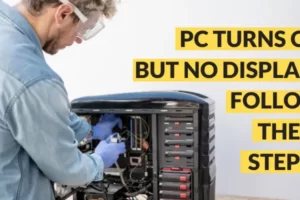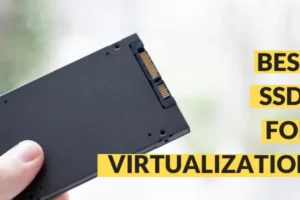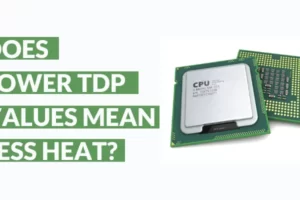So let me tell you what inspired me to create this post on the best SSDs for video editing purposes.
I have one main workstation for all my content creation including videos. It is a beast by the way.
You can check how I created him here.
Up until that time I have only heard of how drastic changes are in terms of speed and responsiveness when you add in an SSD to your system.
And it goes without saying.
The shift from an old laggy 5400 rpm 1366 X 768 laptop was heavenward, to say the least.
But I didn’t stop there.
I thought to myselves, why give up on my old buddy now?
He has served me well during these times. So I ordered an SSD for my laptop to replace the “oh die on me already” 5400 rpm hard drive.
As luck would have it I had to leave my office urgently due to COVID-19 lockdown and my old guy was the only thing I could bring with me to my home in my village.
And I am editing my video on premiere pro on this bad boy, due to the SSD upgrade I did.
That’s how important SSDs are.
So I am thinking I can not be the only guy in this situation right?
Therefore, in this guide I am going to let you know the best SSDs for video editing that you can get for your laptops or desktops that will make your workflow smooth and responsive like butter.
Maybe just smooth like butter and responsive like, like….like a cat.
Yes, yes like a cat.
Best SSDs For Video Editing A Glance








Impact of SSDs on Video Editing and Rendering
As I said, the impact of SSDs in general computing has been nothing short of fantastic.
In this section, let us look at how SSDs influence video editing.
One very obvious thing that you notice when you upgrade from an HDD to an SSD is the general system responsiveness.
The major factors that dictate video editing performance are the number of CPU cores and memory. But the impact of SSDs in increasing system snappiness and responsiveness cannot be ignored.
SSDs will cause your OS and editing software to load faster and generate faster previews. This indirect contribution is very significant in increasing the speed of the overall editing process.
So, let me answer a few questions that people have when it comes to editing and SSDs.
Are SSDs Worth it for Video Editing?
So if you are wondering, do I really need an SSD for video editing?
The answer is yes. The simple reason is that they are fast.
Editing, rendering, and even gaming on old hard drives or poorly chosen SSDs can add to your frustration many folds.
Just think of the situation where you need to complete an urgent project for YouTube, and the render times shown on your PC are like 40 minutes.
Needless to say in the world of tik toks that is just too much.
When it comes to tasks such as video editing, you want things to be as fast as possible. As responsive as possible.
This includes scrubbing through your timeline, previewing, and rendering.
Lags in any of those departments lead to loss of time and, of course, money.
So editing off of an SSD is much much faster instead if you do it on a hard drive.
How Fast Are SSDs Really With Respect To HDDs?
Ok, so let’s talk numbers.
SSD speeds depend on the type of SSD you are using. For instance, the latest Gen4 SSDs will blow normal SATA SSDs right out of the water.
For the purpose of comparison, we are just using a normal SATA SSD and comparing it with an everyday HDD.
Some of the best SSDs for video editing that we are going to discuss here are capable of reading sequential data at a speed of 550 MBps and write it at 520 MBps.
Compare that with an HDD, which can carry sequential read and write speeds at around 125 MBps.
So that quantitatively gives you an idea that SSDs are about four times faster in terms of read speed and a little less than that when looking at write speeds.
This graph from Enterprise Storage gives you a great idea on the contrasting performance between SSDs and HDDs
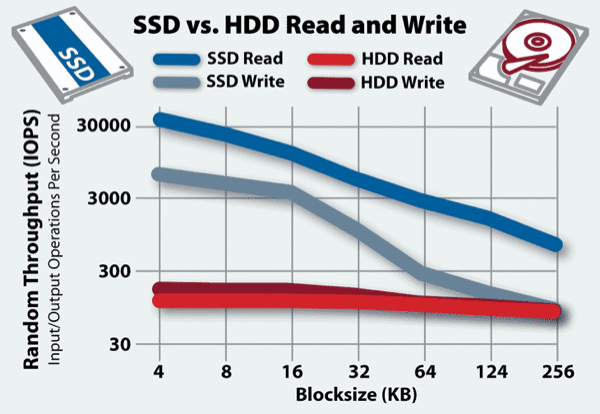
Why Are SSDs Faster?
Great question.
It comes down to the technology that is being used to store data basically.
In HDDs, data bits are stored on a rotating platter using magnetism.
SSDs, on the other hand, store data on microchips.
So every time a request is initiated to read and write data, it has to spin to do the needful. An SSD opens a file instantly because it has its own processor and is using flash-based memory to process data.
Today most laptops will essentially have an SSD in them for storage.
And if you ever try to build a pc for yourselves and you go on different forums asking for advice, everyone will swear by an SSD.
Even at the cost of getting a slightly weaker CPU.
That’s how important SSDs are.
For a video editor, a good SSD means your software like Premiere Pro will load faster, preview faster and render files much faster than on an HDD.
Are SSDs Safe?
No, no, I am not asking this with reference to do SSDs blowing up.
I mean safe regarding how safe your data is stored on an SSD drive.
In contrast to HDDs, SSDs do not operate magnetically, and thus the data stored on an SSD cannot be destroyed magnetically or through magnetic interference.
Because of the absence of mechanical movements and flash storage designs, the data can last for over 150 years.
Crazy right?
Mechanical hard drives have a lifetime of about 5-10 years, 15 years max.
The primary reason they fail before SSD is because of the presence of mechanical moving parts and the likelihood of getting prone to strong magnetic interference.
So yes, in terms of storage solutions like RAID SSDs will be your best bet.
Costly yet a bit. But you get what you pay for.
Best SSDs For Video Editing & Rendering
1.Adata XPG SX8200 Pro (1TB)
Overall Best SSD For Video Editing/ Best M.2 SSD For Video Editing
- Ultra-Fast PCIe NVMe Gen3x4 Interface
- Sequential read/write speed up to 3500/3000 MB/s, Performance may vary based on system hardware & configuration
- Ideal for intense 3D animation, rendering, video and photo editing, and other intense applications
- 5 year PCIe M. 2 2280 is not compatible with SATA M. 2 2280, Please check your system spec before purchasing
- Interface: PCIe NVMe Gen3x4. Please check your motherboard manual and make sure your motherboard's M. 2 slot supports PCIe NVMe or M Key with NVMe. This SSD is not compatible with Mac. Additional parts may be required to use on Mac system.
The Adata XPG SX8200 is probably the best bang for buck SSD you can get.
Its 1TB capacity is sufficient for purposes of editing high-res footage and the SSD provides performance that matches Samsung 970 EVO Plus and PRO SSDs.
It’s best in class power efficiency and endurance comes at a respectable price that won’t break your bank.
In addition to all this the SSD also comes with a DIY black metal heat spreader to make your SSD match with your PC’s aesthetic.
Overall probably the best SSD for video editing that you can get that will serve your needs perfectly.
2.Intel Optane SSD 905P(1TB)
Best High-Performance SSD for video Editing If Budget Is Not An Issue/ Best add-in-card SSD
- Breakthrough Performance for Workstations
- High Endurance Ensures Storage Reliability
- New Possibilities with Higher Capacity
If budget is not an issue and if you absolutely want to crush it with no compromises, look no further than theIntel’s Optane 905P.
Some of the incredible features of Intel’s 905P include Intel’s latest 3D Xpoint memory.
The SSD overcomes a lot many drawbacks offered by NAND and in terms of responsiveness, this is hands down the best SSD for video editing you can get.
And for enthusiasts who like to know everything about the hardware they are using, this SSD offers an endurance rating of over 17 petabytes at 960GB capacitor over 27PBW at 1.5TB capacity.
So here is the deal.
Want just the best out there, Intel Optane 905P is where it is at.
3.Samsung 970 PRO (1TB)
Best M.2 SSD For Video Editing
- Innovative V-Nand Technology: Powered By Samsung V-Nand Technology, The 970 Pro Ssd’S Nvme Interface (Pcie Gen 3.0 X4 Nvme 1.3) Offers Enhanced Bandwidth, Low Latency, And Power Efficiency Ideal For Tech Enthusiasts, High End Gamers, And 4K & 3D Content Designers
- Breakthrough Read Write Speeds: Sequential Read And Write Performance Levels Of Up To 3,500Mb/S And 2,700Mb/S, Respectively; Random Read (4Kb, Qd32): Up To 500,000 Iops Random Read
- Performance Optimization And Data Security: Seamless Cloning And File Transfers With Samsung Magician Software, The Ideal Ssd Management Solution For Performance Optimization And Data Security With Automatic Firmware Updates
- Superior Heat Dissipation: Samsung’S Dynamic Thermal Guard Automatically Monitors And Maintains Optimal Operating Temperatures To Minimize Performance Drops
Over time we have been seeing a massive drop in prices for TLC NAND based SSDs.
Why that is so is something we will discuss in the later part of this post.
But what you need to know right now is for the last three years the SSD market has seen an increase in quality and quantity.
Leading to massive price drops from what SSDs started.
If you are looking for SSDs for video editing, you will need performance and endurance packed into one.
And as such, theSamsung 970 PRO 1TB class M.2 NVMe is the perfect pick for editors.
One of the key features of the Samsung 970 PRO SSD include consistent delivery of up to 3.5/2.7 GBps of read/write speeds.
The performance does of course come with a price but you get the quality assurance from a reliable brand like Samsung in addition to the 5 year warranty.
4.Samsung 970 EVO Plus
Best 500 GB M.2 SSD For Video Editors
- INNOVATIVE V-NAND TECHNOLOGY: Powered by Samsung V-NAND Technology, the 970 EVO Plus SSD’s NVMe interface (PCIe Gen 3.0 x4 NVMe 1.3) offers enhanced bandwidth, low latency, and power efficiency ideal for tech enthusiasts, high end gamers, and 4K & 3D content designers
- BREAKTHROUGH READ WRITE SPEEDS: Sequential read and write performance levels of up to 3,500MB s and 3,300MB s, respectively; Random Read (4KB, QD32): Up to 600,000 IOPS Random Read. Operating Temperature: 0 - 70 ℃
- PERFORMANCE OPTIMIZATION AND DATA SECURITY: Seamless cloning and file transfers with Samsung Magician Software, the ideal SSD management solution for performance optimization and data security with automatic firmware updates
- SUPERIOR HEAT DISSIPATION: Samsung’s Dynamic Thermal Guard automatically monitors and maintains optimal operating temperatures to minimize performance drops. WWN not supported
- 5-YEAR LIMITED WARRANTY: 5-year limited warranty or 600 TBW (Terabytes Written). Power consumption (Idle) - Max. 30 mW Actual power consumption may vary depending on system hardware & configuration. Voltage - 3.3 V 5 % Allowable voltage. AES 256-bit Full Disk Encryption, TCG/Opal V2.0, Encrypted Drive (IEEE1667)
So you remember how I mentioned that when you are choosing an SSD for video editing and animation purposes, you will never know when you will run out of space.
So if you for some reason can’t get a 1TB SSD Samsung 970 EVO Pro,SSD Samsung 970 EVO Plus is something you can trust.
Samsung features its new 9x-layer flash in this iteration while keeping the same controller as its predecessor.
With increased stack of flash Samsung promises improved performance as well and thus the PLUS suffix at the end.
So on a holistic markup you can expect the Samsung 970 EVO Plus with its 9x-layer flash,to deliver you performance at a higher grade than what you would expect from the 970 EVO.
Samsung is the biggest player in the SSD market and time and again Samsung with its subsequent iterations has proved that it has one of the strongest write performance to handle tough workloads.
Making this an ideal choice for rigorous video editing workloads.
5.WD Blue SN550
Best compact M.2 SSD For Video Editing
- Boost your system's performance with next-gen NVMe SSDs
- Over 4 times faster than our SATA SSDs
- Western Digital designed controller and firmware for optimized performance
- Western Digital SSD dashboard constantly monitors the health of your SSD
- NVMe drive not compatible with SATA interface
The WD Blue SN550 offers you a responsive performance on a budget.
TheWD Blue drive is one of the slimmest and compact M.2 drives that you can get your hands on.
You also have the option to pair the WD SN550 with a nice USB 3.1 NVMe adapter owing to its excellent well-regulated power management.
This is particularly great for video editors especially travel video makers who can have a high performance external SSD setup on the go.
Because you can’t take your workstation everywhere.
WD goes out of its way to ensure SSD performance and endurance by subjecting the product to thousands of validation testings.
The 5 year warranty is a testament to that fact and therefore, the WD SN550 is worth considering even if budget is not an issue for you.
A small complaint that consumers may have is the small SLC write cache but even on heavy write cycles theWD SN550 has held its ground.
It withheld its performance to an extent that it managed to respond faster to applications than theWD Black SN750.
So if you are looking for a consistent performer at a budget that you can robustly use as an external SSD as well,WD Blue SN550 is what you need to pick.
6.Patriot Viper VPR100
Best RGB M.2 SSD For Video Editing
- 1TB High Performance SSD, Solid State Drive; for desktop PC builds; due to product height not compatible with laptops.
- Phison E12 Series Controller; 2280 M.2 PCIe Gen3 x 4, NVMe 1.3
- Features an external thermal sensor, vicious heatshield design, RGB APP sync up
- Sequential (ATTO): up to 3,300MB/s Read & up to 2,900MB/s Write (RGB unsync); 4K Aligned Random Write: up to 650K IOPs (RGB unsync)
- Backed by Patriot’s award-winning, build quality, and 3-year warranty; O/S Supported: Windows 7*/8.0*/8.1/10
Looking for some bling coupled with performance?
To people that put as much importance to loud aesthetics as performance, the viper VPR100 hold special appeal.
The heatshield is creatively integrated so as to allow RGB lighting to do the task of maintaining aesthetics and at the same time keeping the PCB cool.
The company maintains that the SSD may perform slower under certain RGB lighting settings.
But after seeing a lot many different systems running different application under different loads we haven’t see any lag in overall performance of the SSD.
In addition to this the LEDs didn’t appear to have any significant heat output either.
So I suggest not to use the genuine cautionary input from the manufacturer to stop you from getting this SSD for your video editing rig if it fits your needs.
So now you know what SSD to pick if you are building an all-RGB rig or even a non-RGB computer to which you would like to add some color to.
7.Samsung 860 EVO
Best Consumer Grade SATA SSD For Video Editing
- Innovative V-Nand Technology: Powered by Samsung V-Nand Technology, the 860 Evo SSD offers optimized performance for everyday computing as well as rendering large-sized 4K videos and 3D data used by the latest applications
- Continuity tester/Wire tracer
- Secure encryption: Protect data by selecting security options, including Aes 256-bit hardware-based encryption compliant with Tcg Opal and Ieee 1667
- Warranty and compatibility: 5-year limited warranty; Windows 8/Windows 7/Windows Server 2003 (32 bit and 64 bit), Vista (SP1 and above), XP (SP2 and above), MAC OSX and Linux
- Included contents: 2.5 inches (7 millimeter) SATA 3 (6 GB/S) SSD & user manual (All other cables, screws, brackets not included); Reliability (MTBF): 1.5 Million Hours Reliability (MTBF)
Samsung is without any doubt your best bet when it comes to SATA drives.
Whether you are looking to build a gaming PC for yourselves or a more work-oriented PC, Samsung 860 EVO drives with their competitive price point match all the benchmarks of high performing SSDs.
The prime difference between 860 EVOs and the PRO models is that of endurance.
But the 860 EVOs come at capacities ranging up to 4TB that you can get for similar or less price point.
This is particularly good for video editing purposes because if for example you edit at 4K you spend storage like crazy with every footage you shoot.
A great arrangement here is an extension to what we do in a system that has both HDD and SSD.
Instead of having an HDD, you can have a high capacity SSD like the 860 EVO and you can keep your frequently used apps, games in a separate high performance SSD that we discussed above.
However, for most mainstream users you don’t necessarily need to go this route.
A good high capacity SATA Samsung 860 EVO or similar will do all your video editing and gaming tasks smoothly.
8.Crucial MX500
Best Consumer Grade SATA SSD Alternative To Samsung 860 EVOs
- 2.5-inch Solid State Drive
- 1TB
I absolutely loveCrucial SSDs.
As a matter of fact this is the exact same SSD I bought for my laptop and I can happily confirm that am satisfied by its performance with respect to what it promises to offer.
If budget is a concern for you, and you don’t necessarily require an NVMe SSD,Crucial MX500 SSD is just the right pick for you.
But by this statement I am not in anyway propagating that the performance offered by the SSD is not apt.
As a matter of fact as an alternative to theSamsung 860 EVO, the Crucial MX500the Crucial MX500 offers a stable, reliable performance at a competitive performance.
Crucial SSDs for the most part offer the maximum value for the price you pay for any capacity that you would want.
9. Samsung 860 PRO
Best Prosumer SATA SSD for video editing
- INNOVATIVE V-NAND TECHNOLOGY: Powered by Samsung V-NAND Technology, the 860 PRO SSD offers optimized performance for everyday computing as well as rendering large-sized 4K videos and 3D data used by the latest applications
- ENHANCED READ WRITE SPEEDS: Sequential read and write performance levels of up to 560MB/s and 530MB/s, respectively
- SECURE ENCRYPTION: Protect data by selecting security options, including AES 256-bit hardware-based encryption compliant with TCG Opal and IEEE 1667. Power Consumption (W)- Average- 2.2 W. Maximum- 4.5 W (Burst mode)
- INCLUDED CONTENTS: 2.5 inches (7 millimeter) SATA 3 (6 Gb/s) SSD & User Manual (All other cables, screws, brackets not included); Reliability (MTBF): 1.5 Million Hours Reliability (MTBF)
So let me tell you when you should buy this SSD.
When you are absolutely sure that you need a SATA SSD and for some reason can’t switch up to NVMe but don’t want to settle on performance.
So if you are looking for pinnacle performance and endurance on SSD, Samsung 860 pro is what you should get.
However, it is my duty to tell you that you don’t necessarily need to invest in the PRO SSD if you don’t have the need for it.
I am not saying you shouldn’t get it.
If you can and if you need it go ahead and get it, you most definitely will be satisfied with the performance.
You will most definitely get what you pay for and more.
Just be very clear with your needs are that’s all.
The Samsung 970 PRO, similar to the 860 PRO uses Samsung’s 64L MLC V-NAND, which makes it rise in charts of benchmarks and endurance when compared with its rivals.
In terms of capacities, you an get the 970 PRO up to 4 TB and in terms of endurance you can expect endurance parameters touch as high as 4,800 TBW.
But of course this sky high performance come with a price point which is approximately triple to that of your mainstream SSDs.
Hence, these SSDs are ideal for enterprise-usage or for users who have a really good reason to invest in them.
How to Choose SSD for Video Editing?
Those were the best SSDs that you can look into buying straight away for your video editing rig.
While they are the best ones, they aren’t the only ones. If you are looking to navigate the sea of SSDs and pick one on your own here are the factors you need to consider.
Form factor
SSDs come in three different types of sizes or form factors which are M.2, add-in card, and your traditional 2.5 inches.
The 2.5 inches SSDs are the most commonly used. They are the same size as your laptop’s HDD. The connection protocol that they use is SATA, the same as HDDs.
And therefore, you can easily swap them with your HDD and see your system become more responsive.
For the same price, you will get much more capacity in SATA SSDs than M.2 and PCIe SSDs, which offer more speed.
Add-in card SSDs are much faster since they use the PCI Express bus rather than SATA. They also access more lanes than most M.2 drives. An AIC SSD fits into the motherboard that is used for graphics cards and RAID drives, therefore if you want them first ensure you have an empty PCIe x4 or x16 slot available.
M.2 is quickly becoming a standard. M.2 form factor is roughly similar to the size of a RAM stick and, therefore, ideal for slim laptops.
Most modern motherboards offer two or more M.2 slots so you can if you want run SSD drives in RAID, which may be something you want to do for a video editing rig.
Budget
Obviously, you need to consider how much you are willing to invest in SSDs.
SSD price increases with capacity and the interface technology they use. SATA SSDs are cheapest in terms of GB per dollar so you can use them as storage drives for your clips.
A couple of years ago SSDs were considered premium devices available to a select few. But with the advancement of storage technology SSDs are quickly becoming mainstream.
Today, you can find high-capacity premium SSDs at affordable prices.
Another good thing is unlike PSUs, SSD quality is more or less brand independent. I am not saying all brands create good SSDs. I am saying you will find some really good SSDs in almost all brands.
So, if you are limited on a budget do not ignore brands like silicon power and ADATA. They create some really good SSDs for a much lesser price than what you will have to pay say Samsung for same capacity or interface technology.
Interface Technology (M.2 PCIe, SATA, Add-In Card)
First off, you need to lock on to which kind of SSD you want. As of now, you can have a basic SATA, M.2 SATA, M.2 NVMe, M.2 NVMe Gen4, and Add-In card SSDs.
To confirm this, have a look at your motherboard’s manual or an online tool like the crucial memory finder to see what SSD interfaces are supported by your motherboard.
After that, it is a simple act of choosing what brand, capacity, and specific speeds you are looking for depending on your needs.
As you have observed, the price increases depending on the type of interface technology. If you are limited on the budget you will have to find the right combination of price and technology.
Capacity
Capacity is one of te most crucial aspects you need to consider if you are looking for the best SSD for a video editing rig.
I made a huge mistake in this regard.
I picked one of the best SSD for video editing.
The mistake that I made was I went for the 256 GB version.
Yikes.
Be better. Don’t do what I did.
If you are getting an SSD for video editing purposes, I highly.
If you can’t get 1 TB go for.
Especially, if you are going to install the SSD on a laptop. Don’t do what I did.
capacity or more.
People who are looking to install an SSD in their PC can go even for a 256 Gb capacity SSD, provided you already have a high-capacity hard drive already installed on your computer.
The reason being even if you edit at 1080p, the space gets filled up ridiculously fast.
So shoot for the highest capacity you possibly can.
Speed
Different interfaces will mean different speeds because of the different bandwidths at which they operate.
SATA interface is the slowest when compared with M.2 PCIe or PCIe add-in-card.
However, SATA interface is widely available on almost all laptops and desktops.
All of them will support 2.5-inch SATA drives, and to a great extent, in your mainstream tasks, you will notice a small difference between a new SATA drive and a PCIe model.
In the recommendations, I have taken all these factors into consideration while making my suggestions.
So, you will not go wrong by choosing any of my recommended SSDs for video editing.
That being said, you are now equipped with sufficient knowledge to pick the right SSD by yourselves.
Conclusion
If you look at pure storage metric comparison SSDs do cost more than HDDs of course.
Storage review observes that an SSD can cost anywhere from $0.35 to $1.50 per GB and contrast that with hard-drives that cost near about $0.05 per GB.
However, I have some really good news for all of you.
Look at this graph by minitool.
The graph show the drastic price drop over the years of one of the best ssd for video editing out there,Samsung 860 EVO 500GB.
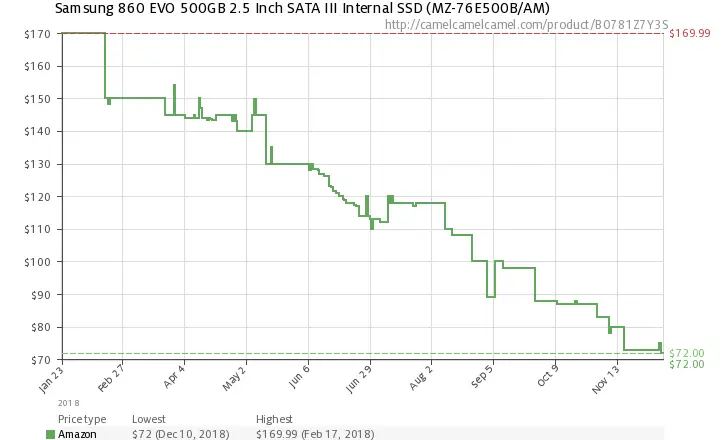
Other popular drives like WD Blue 3D NAND have also seen massive price drops.
Great news, right?
This is why in all pc build forums people will almost violently push you towards getting an SSD.
So what is the reason behind such huge price drops in the price of solid-state drives?
The reason is high competition and over supply of NAND flash memory chips.
As per the study by minitool, the main reason behind such rapid decline of SSD prices are the smartphones.
The small difference between subsequent models doesn’t pose a big replacement demand.
As a consequence thereof the ever expanding NAND supply is left with more stock than needed.
And thus the steep and continously decreasing prices.
So I guess I have created sufficient knowledge base in you to truly consider getting an SSD for your video editing rig.
If you have any questions whatsoever regarding choosing te best SSD for video editing or otherwise, don’t shy away from mentioning it down below into the comments section.
Let me know which SSD did you decide to go with for your video editing PC.
Take great care of yourselves and I am going to see you in the next one. 🙂





